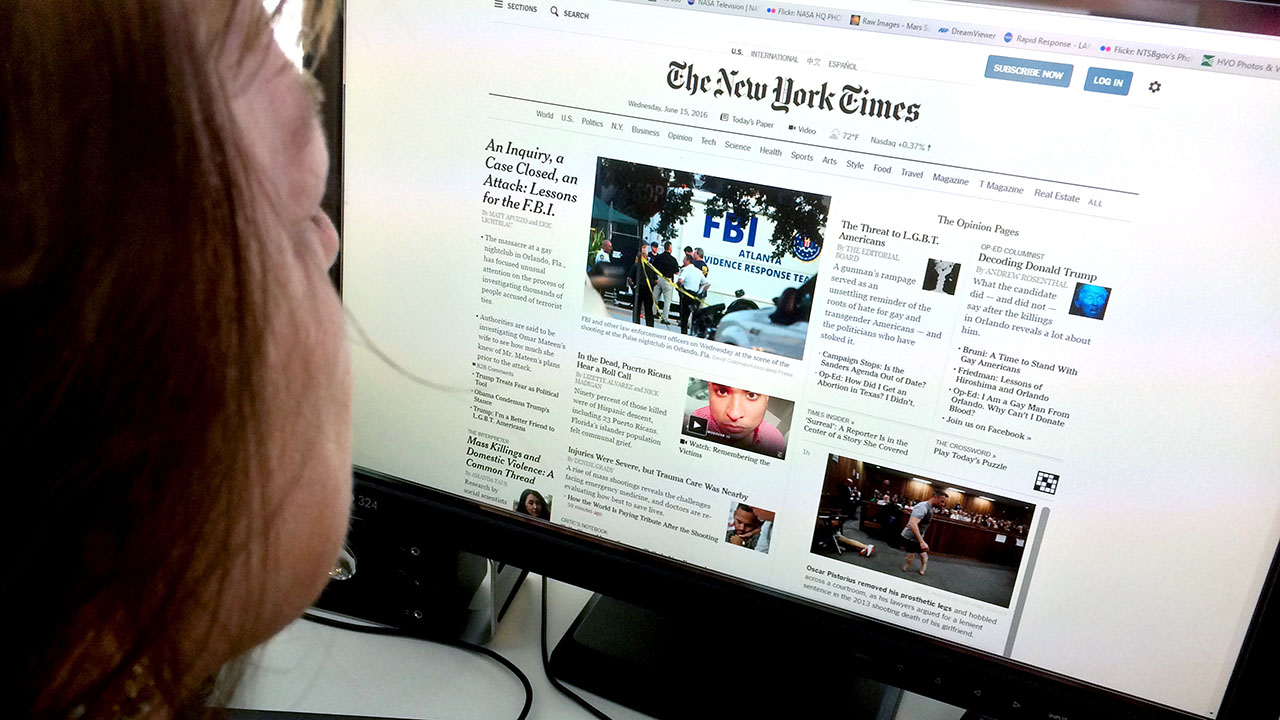News Channels - The Facts
News Channels - The Facts
Blog Article
Some Known Details About News Channels
Table of ContentsExcitement About News ChannelsNews Channels Things To Know Before You BuySome Known Questions About News Channels.The 7-Second Trick For News Channels
Rolling news networks broadcast information web content 24 hours a day. The advent of the net has enabled the normal 24-hour-a-day discussion of numerous video clip and audio news reports, which are updated when extra info comes to be available; several tv broadcasters offer material originally offered on-air as well as unique or extra news material on their websites.Stations that utilize a "wheel" layout tend to keep to an established timetable of specific shows at certain specific mins on the hour, and one of these sections is regularly an information notice. These short publications will supply summaries of any kind of damaging information of rate of interest, and might include local concerns such as weather condition projections or web traffic records.

News broadcasts in the USA were at first sent over the radio. NBC began broadcasts in November 1926, with CBS going into production on September 25, 1927. Both at first reviewed comparable subjects, such as political election results, presidential commencements, and other issues of problem to the basic public. NBC quickly arised as the leading force for enjoyment ability.
3 Easy Facts About News Channels Explained
A general shift in time happened in the style of the evening newscasts in the majority of countries. In the 1950s, tv was unique enough that it was thought about home entertainment. In the 1960s and 70s, tv broadcasts had a tendency to be unusually "serious" by later standards, including more "difficult information" and less light enjoyment mixed in.

From 2000 to 2010, total viewership of transmission information remained to decline. Some news-adjacent cord programs got fame and success in this era (such as the comedy-focused and the commentary-focused ). Nevertheless, their gains did not balance out the continuing steep decline in viewership of mainline network information. This age saw diversity and fragmentation proceed even additionally as new particular niche networks acquired prominence such as the business-focused CNBC, Bloomberg Tv, and Fox Business.
The Of News Channels
broadcasts on other stations. The National, which has actually broadcast on CBC Tv given that 1954, is the longest-running national network broadcast in copyright. All 3 networks also produce regular newsmagazines: CBC's (aired because 1975), Global's (aired given that 2008), and CTV's (broadcast because 1966 and currently the longest-running network newsmagazine in copyright). [] CTV's is the sole national morning information program on broadcast tv in copyright, and replaced, which broadcast since 1975.
Regional Television stations in the United States normally transmitted local information three to four times a day on standard: frequently airing at 4:30, 5:00, 5:30, or 6:00 a.m.; noontime; 5:00 and 6:00 p.m. in the very early evening; and 10:00 or 11:00 p.m. Stations that create regional broadcasts commonly relay as little as one to as much over twelve hours of neighborhood news on weekdays and as little as one hour to as much as my website seven hours on weekend breaks; information shows on weekend breaks are generally restricted to morning and night newscasts as the variable scheduling of network sporting activities shows (if a station look here is connected with a network with a sports department) usually stops most stations from lugging lunchtime newscasts (nevertheless a couple of terminals found in the Eastern and Pacific time zones do produce weekend break lunchtime broadcasts). From the 1940s to the 1960s, broadcast television stations commonly supplied regional information programs only one to two times each night for 15 mins (the regular size for numerous locally produced programs at the time); typically these programs aired as supplements to network-supplied night information programs or leadouts for primetime programs.
Indicators on News Channels You Need To Know
News share agreements are most typical with stations co-owned. News Channels with a bigger network associate or whose procedures are collectively handled via a shared solution or neighborhood advertising and marketing contract. In instances where a station with an existing information division becomes part of a news share arrangement, it will certainly result either the two departments combining or the outright conversion of broadcast manufacturing from in-house to outsourced manufacturing.
These names are meant to set one station apart from the rest, especially for customers that are selected for target market dimension studies. If the participant was not able to provide a channel number or call letters, the broadcast title is often sufficient for the proper station to receive Nielsen scores credit scores. [] The Big 3 broadcast tv networks produce early morning and evening nationwide newscasts.
Report this page